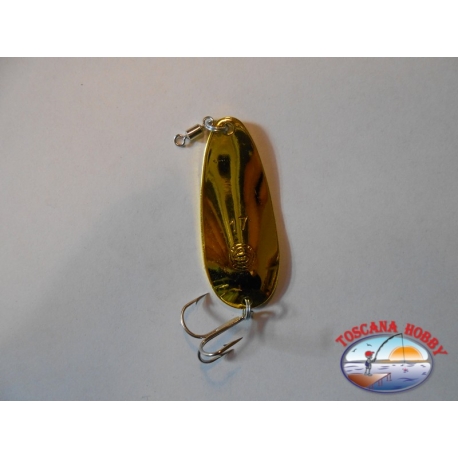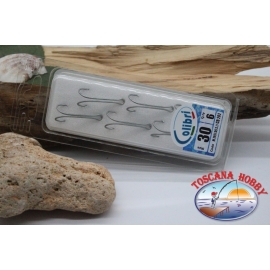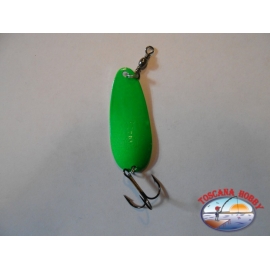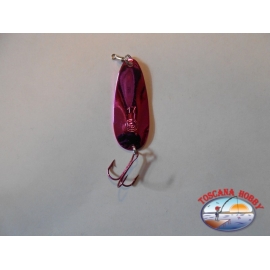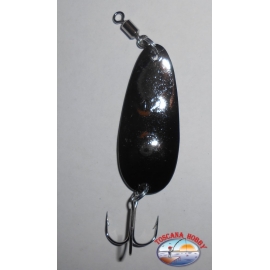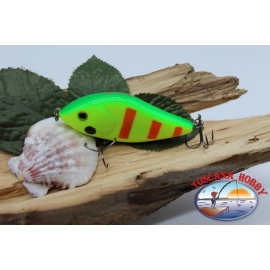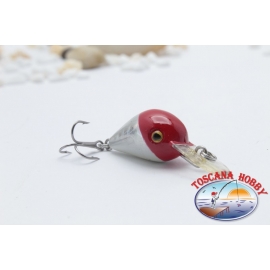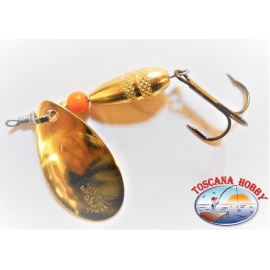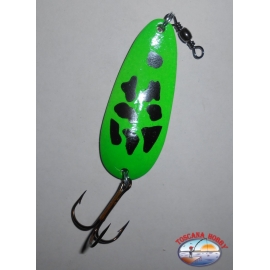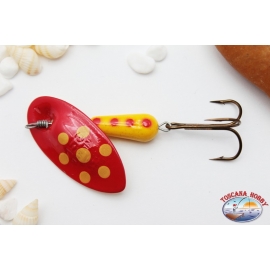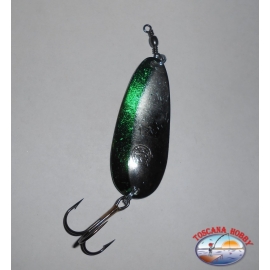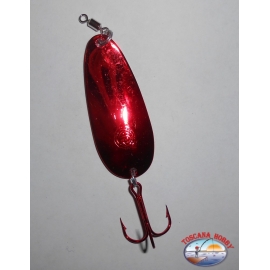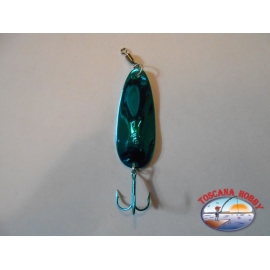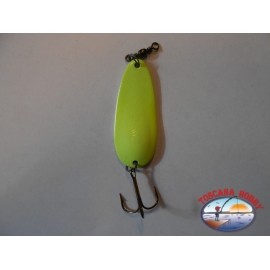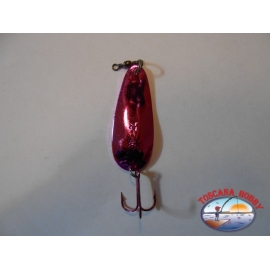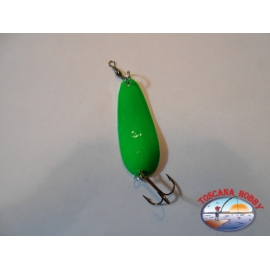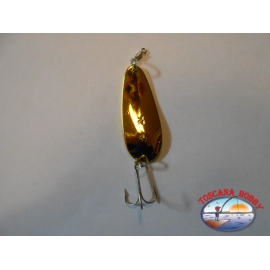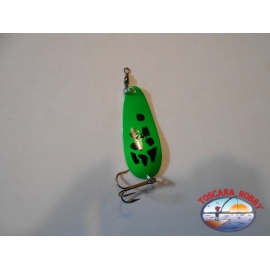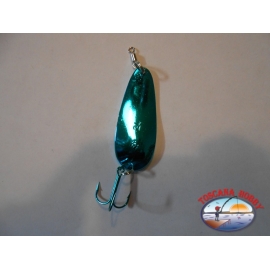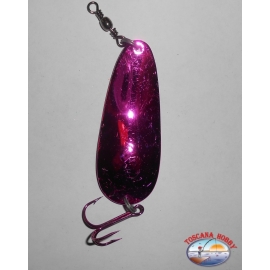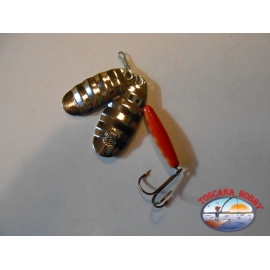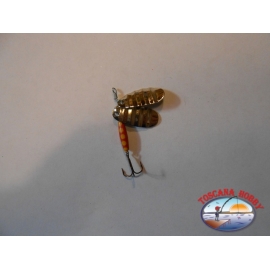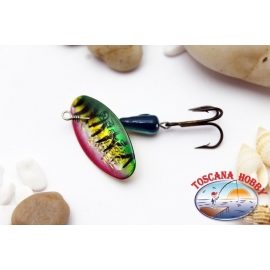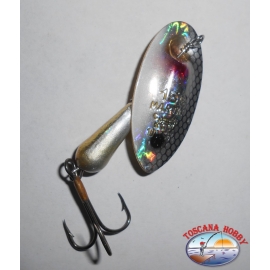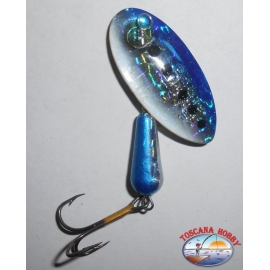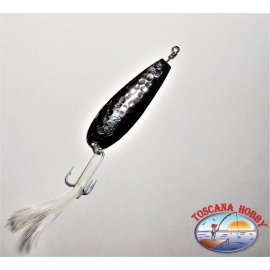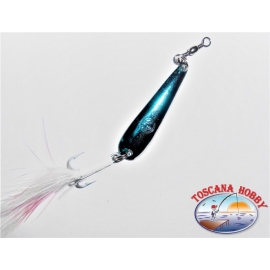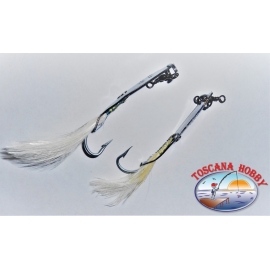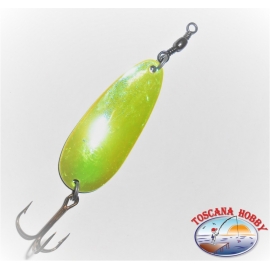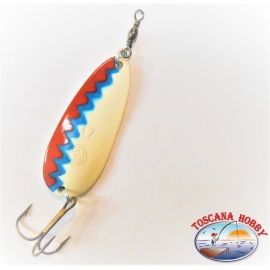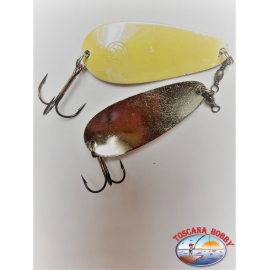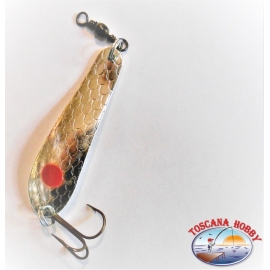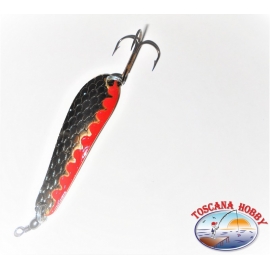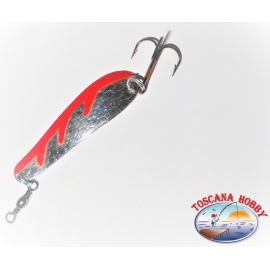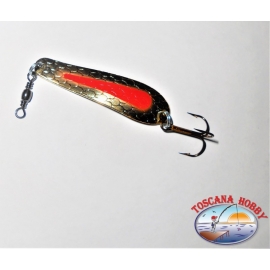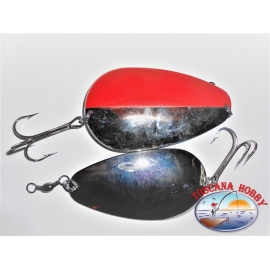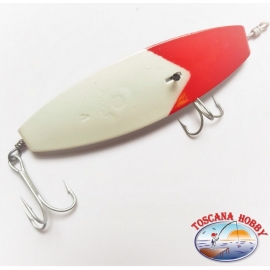Teaspoon waving Martin Ardito from gr. 17.R145
R.145
New
Teaspoon waving Martin Ardito from gr. 17,00
This product is no longer in stock
Data sheet
| Grammatura | 17,00 |
| Tipologia | Ondulante |
More info
Teaspoon Undulating Martin Ardito from gr. 17,00
(each item is as pictured)
--- --- ---
Guide to the use of rotating and undulating spoons
The rotating spoons are divided into two main categories, The Martin type, with Scoop inserted directly into the axis, and the Mepps type, with Scoop inserted into the axis through the use of the cavalierino. Behaviors in water are different.
Spoons type Martin (with paddle inserted directly on the axis)
They have the paddle inserted directly into the axis and a body that can be drop-shaped or more tapered. A more concentrated lead down (drop) holds the bottom in Current better, unlike a more elongated one that also reduces the angle of rotation between the paddle and the axis producing even less friction during recovery, favoring a more immediate action and a faster ascent. The latter patterns can be deadly when predators attack in the surface layers. Other substantial differences lie in the fact that the Martin begin to flicker as soon as they touch the water and go down to the bottom, and also due to the fact of having the paddle inserted directly into the axis have as a result a lower angle of rotation compared to the Mepps, which determines a lower friction in the recovery phase and a better seal of the bottom. On the other hand, at the same grams, shorter throws are obtained than with the artificial ones with cavalierino, because in the latter the paddle, overturning, offers less friction in the air.
Mepps type spoons (with headstock with cavalierino)
As mentioned, the paddle inserted into the axis through the cavalierino, allows this type of Spoon a greater casting distance and a higher rotation angle that determines a larger Halo. Not only is this the only difference, but there is also a greater number of vibrations in the water, because the paddle rotates faster. The latter can be elongated, so-called "willow leaf", or more rounded, with the difference that the first cuts the current better and holds the bottom better.
Tandem Spoons
For both the aforementioned spoons you can also have tandem versions, that is, in practice a rotary with two (in some cases even three) scoops, which have the advantage of being able to be launched further while maintaining a contained profile. This artificial manages to produce a great turbulence in the water, attracting the attention of all the big predators. They can be divided mainly into two categories, with single lead or double lead. The former regardless of their weight pull up during recovery, the latter have a better hold on the bottom. They are ideal for moving intanato fish on the deep layers, especially in winter, or to awaken apathetic fish, .
Wave Spoon
These lures are among the oldest lures that man has made. Probably even primitive men made them from pieces of worked and shaped bone. The ondulante is an extremely multifaceted and customizable bait and lends itself to an infinity of recoveries, you will almost never find two fishermen who use it in the same way. They are not artificial as easy to use as the Rotary, but once mastered they can really make a difference. First of all, we need to be very careful in choosing the weight and shape depending on where we fish. Heavy models of compact shape will be preferred for probing the lower layers of the seabed. Conversely, we will use lightweight models with a wide and thinner profile for recoveries in the surface layers or for sliding, for example, near a herbarium. Already in the fall phase they have a very priming flickering movement, and at this time we can already have an attack by the fish, so it is necessary to maintain full contact with the artificial right away. Once the desired depth is reached, we can start the recovery: linear very slow or fast, with small taps or long pulls with subsequent releases with the rod more or less inclined, there is no better way than another, it will only be the experience of the fisherman to indicate the most profitable recovered in that given place and at that given time. In general, if the movements are slow, the wave will make larger flickers and generate low-frequency vibrations, to which less active fish are more sensitive (for example, in the cold season). On the contrary if recovered or "yanked" faster the oscillations will be faster causing high frequency vibrations suitable for very active fish. The only care that we will always have is to never recover too quickly or give too violent blows of the barrel, because we will only get the "teaspoon" effect, that is, we will turn the wave on its axis distorting the function of this artificial.
Color
There are not always extremely capturing colors. Only the experience of the fisherman can determine which color at a given time and place makes the most. However, we can say that in principle with clear waters and sunny weather it is advisable to use dark and opaque colors (even gold), because the reflections of a silver paddle could disturb the fish, while with conditions of scarcity of light or with turbid waters, they can turn out to be more catching brighter colors, such as silver or fluorescent colors.
Use of tails and feathers
They increase the vibrations emitted in the water with consequent greater catching power moving even particularly apathetic fish. They can be made of wool bows or natural feathers. Generally the former are more suitable for perch and Pike, the latter for trout and chub.

